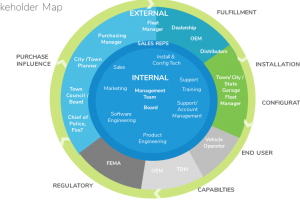The Next Billion Internet Users
The next billion Internet users will be vastly different from the first billion who saw the dawn of the internet.
The future of the internet is overwhelmingly not only mobile first, but mobile only. In a Google blog article,Caesar Sengupta discusses the dramatic geographical shift of internet users. The center of internet growth is shifting from a center in Silicon Valley, to Brazil, China, India, Indonesia, and Nigeria and their rapidly growing and changing cities of São Paulo, Shanghai, Bangalore, Jakarta and Lagos.
Google now has an entire team dedicated to the future of internet users titled “The Next Billion Users.” It is a vital focus for Google because access and demographics are changing so rapidly.
Payments and Transactions
WeChat is hugely popular app platform developed in China. While it began as a conferencing tool, somewhat similar to WebEx, the app is now seen as a full communications and transaction platform. One of the many apps allows peer to peer and digital wallet payments, and the payment app is overwhelmingly accepted in the smallest shops and fruit stands and welcome over cash.
WeChat also connects directly to Didi – China’s response to Uber. Didi recently raised $4 billion in investment from Softbank in December of 2017.
To Americans, the growth from a conference calling app, typically thought of as a “work” application to financial services – a more personal need – may seem strange. However in China the application is used for chat of every kind. It has basically replaced the function of a phone call for everything from catching up with friends to service requests and even training and education. It is a personal and always present screen.
Content
Not long ago, China predicted it would not be able to print text books for schools because of population growth and the sheer number of trees needed to support the creation of print materials. China began thinking differently about training because keeping on same course meant facing a limitation of not only natural resources, but the risk of limiting education. Over the last decade video training and streaming classes are widely popular and an accepted method of education in China for tutoring and primary learning.
In countries where the creation of paper is a challenge, mobile phones have provided a first look into the world’s libraries that were previously inaccessible. Couple this phenomenon with impressive and rapid advances in translation, and new content consumption is growing at incredible rates in countries that were never seen as serious content markets previously.
What does this mean for content creators? We need to concentrate on design when creating content and design strategically for method of consumption as well as the content itself. Just as e-books changed the way people in the Western world choose to consume content, mobile only means a new way to think of structure, chapters, breaks, length and – rather excitingly, multi-media.
Amazon continues to make exciting roads into digital content development.
Amazon’s “Polly” is a new text-to-audio platform that produces a somewhat tolerable audio format directly from text in several languages and dialects. It will only continue to improve in accent and voice availability and intonation and is something to watch.
Amazon also started working with authors to produce small animations for kindle books that offer a new view into written works. See it at work in High Howey’s Kindle Book “Wool” and Dean Koontz’s “Ricochet Joe” for an examples. While the animations are not movies or full scenes, they are enough to entice and draw attention, setting visual scenes for e-books. It’s a trend that will likely grow as new content is desired in new markets. The animation may be new experience to western readers. However, it is content as new internet users have always expected – a mixed media of text, story, animation, links and possibly video. Content is consumed, not just read.
Impacts to Design
Understanding the end user has never been more important. As we see growing acceptance of designing user-centered applications and experiences, we may have settled into “knowing” our users. We cannot plateau in understanding design needs when user expectations are changing radically in a world view versus a previously pervasive western view.
The future of the internet is consumption on an ever-present tool, with constantly accessible services, all languages and all services. The experience can never be secondary to a desktop or “bigger” experience. Those days are over and old fashioned when it comes to new users who own the future of experiences.
Translation is going to be a tremendous growth area to support changing demographics of internet users especially to represent the languages of Brazil, China, India, Indonesia and Nigeria. While English is spoken in each of these countries, its secondary status is where it will remain and younger users have more access to everything they need in their native languages.
Applications and experiences need to meet these expectations or risk falling behind to competition.










